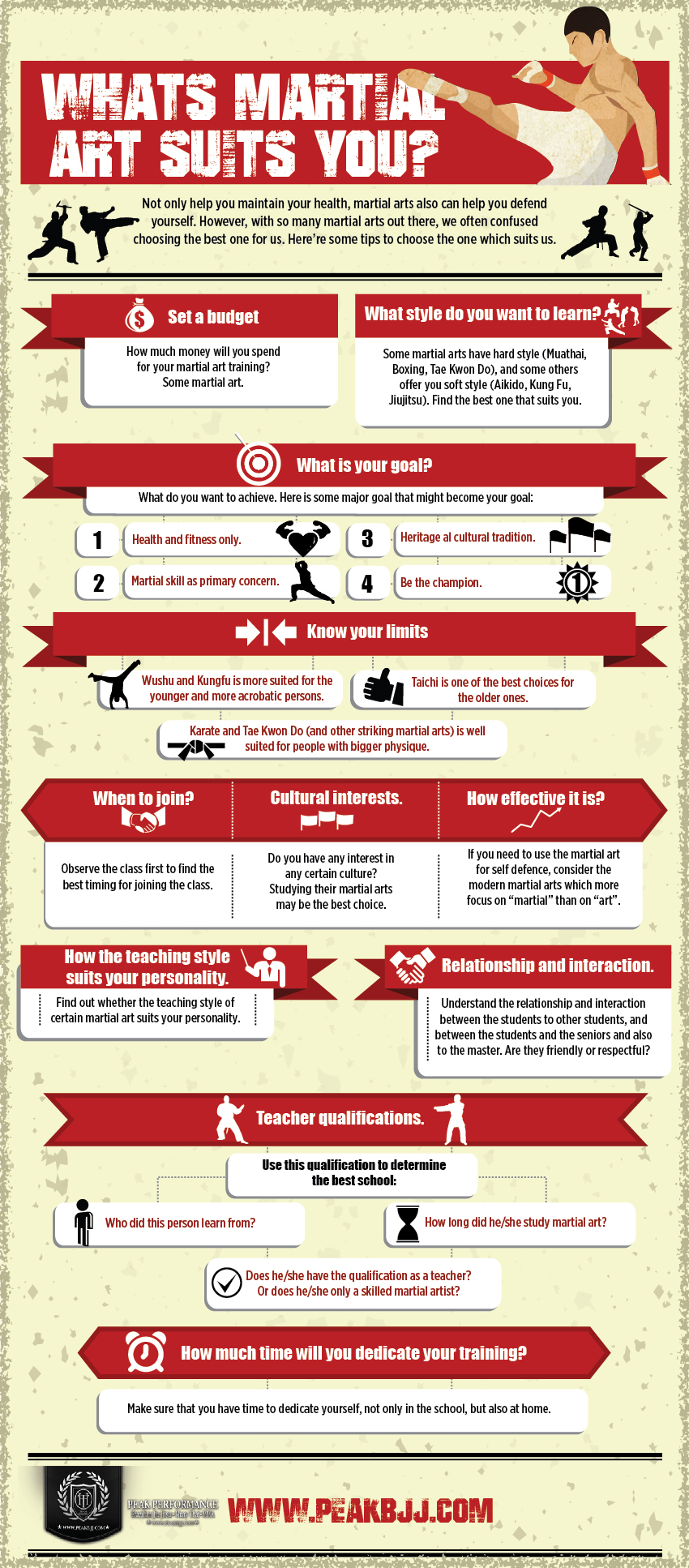Decipher The Captivating Narrative Of Martial Arts, Highlighting Its Trip From Standard Roots To The Contemporary Techniques That Are In Style Today. Discover The Underlying Principles That Maintain This Ageless Art Type
Decipher The Captivating Narrative Of Martial Arts, Highlighting Its Trip From Standard Roots To The Contemporary Techniques That Are In Style Today. Discover The Underlying Principles That Maintain This Ageless Art Type
Blog Article
Content Author-Brooks Valentine
Enter the world of martial arts, where ancient origins and modern techniques clash in an electrifying trip of self-control and self-discovery.
As you look into the history and evolution of this exciting art form, prepare to be captivated by the cultural influences, technological developments, and extensive approach that have actually shaped it over centuries.
From the field of battles of old human beings to the training premises of today, martial arts have stood the test of time, constantly adapting and expanding.
https://criminal-justice-lawyer66543.blogripley.com/30868860/vital-qualities-to-review-in-an-identified-criminal-law-practice , each movement, lugs with it the weight of numerous years of practice and wisdom, passed down via generations. This is a story of resilience, of warriors who sought not only physical expertise, however additionally inner strength and harmony.
Join us on this amazing expedition as we reveal the secrets, the tales, and the transformational power of martial arts.
Prepare yourself to be motivated, challenged, and for life altered by the history and development of martial arts.
Cultural Influences on Martial Arts
As you check out the history and development of martial arts, you'll quickly find the fascinating ways in which cultural impacts have shaped these combat methods.
From the old worlds of China and India to the more current growths in Japan and Brazil, martial arts have been heavily affected by the cultures in which they originated.
For example, Chinese martial arts, such as Martial Art and Tai Chi, are deeply rooted in the approach of Taoism and the principle of Yin and Yang.
In contrast, Japanese martial arts, like Karate and Judo, mirror the samurai warrior practices and the values of self-control and honor.
Likewise, Brazilian martial art, Capoeira, combines elements of African dancing and songs, showing the social heritage of African servants in Brazil.
These cultural influences not only give each fighting style its distinct characteristics but additionally supply a deeper understanding of the historical and social contexts in which they developed.
Technological Advancements and Martial Arts
With the surge of innovative weaponry and ingenious training devices, you have actually been able to enhance your skills and adjust to the ever-changing battle landscape.
Technological developments have revolutionized the means martial arts are exercised and instructed. Virtual reality simulations now allow you to train in reasonable fight situations without the threat of physical harm. High-speed cameras catch every step, allowing you to assess and ideal your methods. Wearable tools check your heart rate, breathing, and muscular tissue activation, offering instantaneous feedback on your performance.
Furthermore, the growth of customized devices, such as resistance bands and agility ladders, has actually allowed you to enhance your speed, toughness, and dexterity. These technological innovations have not just made training a lot more effective however have actually likewise pressed the limits of what is feasible in martial arts, permitting you to get to brand-new heights in your technique.
The Approach and Principles of Martial Arts
The viewpoint and concepts of martial arts are deeply rooted in shaping your state of mind and instilling technique, focus, and respect in your practice.
1. Way of thinking: Martial Arts educates you to create a solid and durable way of thinking. It allows you to overcome challenges both on and off the mat, pressing your limitations and persevering despite misfortune.
2. Self-control: Martial Arts demands technique and self-control. Through regular training and adherence to strict rules and methods, you find out to control your impulses and develop a strong job values.
3. Focus: Martial Arts calls for extreme emphasis and concentration. By training your mind to be existing in the minute, you improve your ability to respond promptly and successfully during fight scenarios.
4. Respect: Martial Arts stresses regard for oneself, instructors, training companions, and opponents. It instructs you to value the skills and experiences of others, fostering a feeling of sociability and gamesmanship.
https://gunneruddjq.csublogs.com/36665074/the-advantages-of-employing-a-neighborhood-criminal-defense-attorney on completing your journey through the fascinating globe of martial arts! Throughout this exploration, you have actually witnessed the abundant background and amazing advancement of these combat practices.
From their old origins to the contemporary methods we see today, martial arts have been formed by cultural impacts.
The integration of technology has actually likewise played a substantial role in revolutionizing the means martial arts are instructed and exercised in the present day.
Nonetheless, https://voiceofoc.org/2022/04/local-lawyers-vying-to-become-ocs-next-top-prosecutor-sound-off/ is necessary to remember that martial arts are more than simply physical battle. https://criminal-appeals-attorney11987.getblogs.net/62746370/standards-for-selecting-the-right-criminal-law-firm-to-represent-you include extensive ideologies and directing principles that surpass the simple act of fighting.
Take a moment to review this obsolete journey and appreciate how the tradition of martial arts remains to flourish in the present, transcending time and limits.
